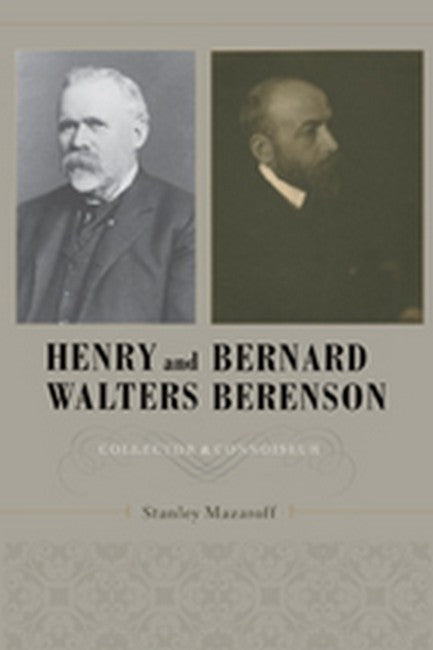Collecting Italian Renaissance paintings during America's Gilded Age was fraught with uncertainty, about both the true identity of the artists and the conflicting interests of dealers. In no other relationship is this more evident than that of Henry Walters, founder of the legendary Walters Art Museum in Baltimore, and Bernard Berenson, the era's preeminent connoisseur of Italian Renaissance paintings. Stanley Mazaroff tells the intriguing story of their close yet contentious relationship. At the turn of the century, Walters acquired more than 500 Italian paintings purportedly by the great masters of Renaissance art. Walters retained Berenson to analyze and authenticate this then famous collection, asking Berenson to also write a catalogue and to acquire additional paintings. Yet a friendship that began warmly quickly cooled when Walters discovered that Berenson was driven by interests that conflicted with Walters's own.The relationship between Walters and Berenson illustrates the travails of art collecting in late nineteenth and early twentiethcentury America. Mazaroff describes the manner in which Berenson transformed Walters's holdings from a collection of pretentious masterpieces to one that effectively told the history of Italian Renaissance painting. He further details Berenson's hyperbolic descriptions of the paintings he was trying to sell to Walters, the problems that arose with Berenson's own faulty attributions, and Berenson's business practices and other ethical issues that ultimately drove a wedge between the two men.The book is based on correspondence between Walters and Berenson and other archival documents recently discovered at the Walters Art Museum and the Villa I Tatti, Berenson's home outside of Florence. For art and cultural historians and educated readers, the book offers fascinating insight into Renaissance art, the history of art collecting, and the founding of American museums during the Gilded Age.Recognized annually in Best Lawyers in America, Stanley Mazaroff retired from the active practice of law to study art history at the Johns Hopkins University. He is also a member of the Board of Trustees of the Walters Art Museum.

